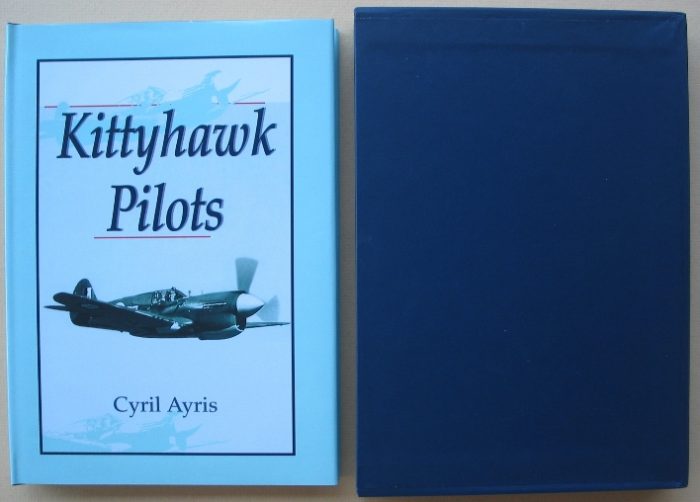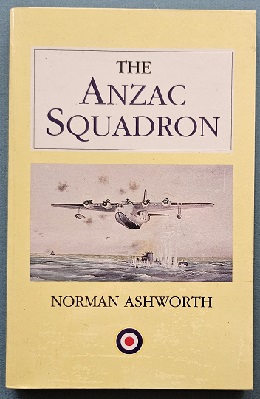Description
Title: Kittyhawk Pilots
Author: Ayris, Cyril
Condition: Mint
Edition: 1st Edition
Publication Date: 2002
ISBN: 0958157502
Cover: Soft Cover without Dust Jacket (in slip case) – 164 pages
Comments: This is the story of Flying Officer Stan Watt and of his fellow pilots of 450 Squadron RAAF. They were trained as WWII fighter pilots, but when the Germans were forced out of North Africa and back through Italy, suddenly there were no Luftwaffe to fight. Almost overnight their role changed from fighter to dive bombing.
450 Squadron, nicknamed the “Desert Harassers”, was one of the most famous Royal Australian Air Force squadrons of the Second World War. Its nickname was derived from the taunts of the German propaganda broadcaster “Lord Haw Haw” who, during the squadron’s operations in the Western Desert branded it a band of “Australian mercenaries whose harassing tactics were easily beaten off by the Luftwaffe”.
Raised under “Article XV” of the Empire Air Training Scheme, 450 Squadron came into existence at Williamtown in New South Wales on 16 February 1941. It was the first of the “Article XV” squadrons to be formed and initially it consisted only of ground crew. After arriving in the Middle East in May 1941 it was combined with the pilots and Hawker Hurricanes of 260 Squadron, Royal Air Force, to form an operational squadron. This combined squadron flew predominantly ground-attack missions during the Syrian campaign of June-July 1941.
In August 1941, 260 Squadron’s ground crew arrived from Britain, and 450 Squadron regained its original identity. Awaiting the arrival of its own pilots and aircraft, it moved to Egypt in October and began operating as an advanced Repair and Service Unit. On 18 December, the squadron’s first aircraft – Curtis P-40 Kittyhawks – began arriving allowing the squadron to reform as a fighter squadron.
450 Squadron commenced operations on 20 February 1942 and remained active for the rest of the war, taking part in the campaigns in the Western Desert, which spanned Egypt and Libya (February 1942 – February 1943), Tunisia (February – May 1943), Sicily (July – August 1943) and Italy (August 1943 – May 1945). Although designated a fighter squadron, its principal role was ground-attack in close support of the land forces. This role required the squadron’s ground organisation to be highly mobile and, particularly in north Africa, it would leap-frog detachments from one forward landing ground to the next to keep pace with the fighting on the ground. During the fighting in Italy, the squadron was often employed on “cab rank” duty in which aircraft would circle close to the battlefield ready to be called in by ground-based controllers to attack targets impeding the army’s advance. The commander of the German Army in Italy would later reflect upon the impact of the Allied fighter-bombers: “the effectiveness of the fighter-bombers lay in that their mere presence alone, over the battlefield, paralysed every movement.”
450 Squadron’s war ended, just as it was preparing to re-equip with North-American P-51 Mustangs, with the surrender of German forces in Italy on 2 May 1945. It disbanded at Lavarino in Italy on 20 August 1945.



